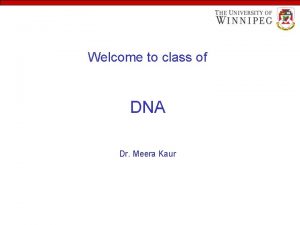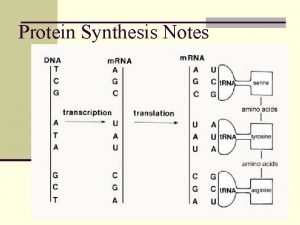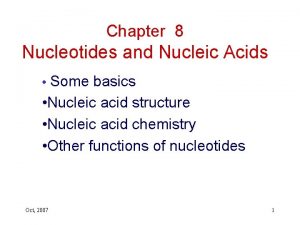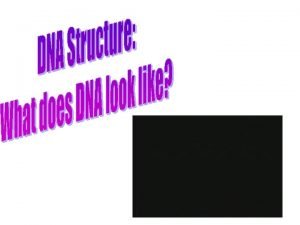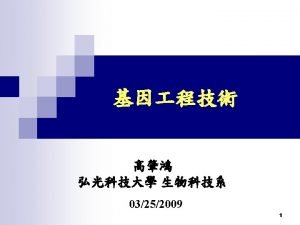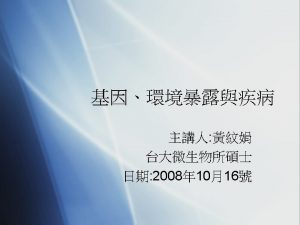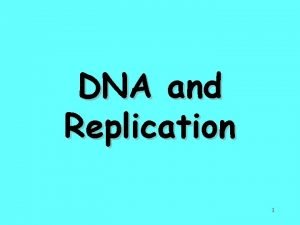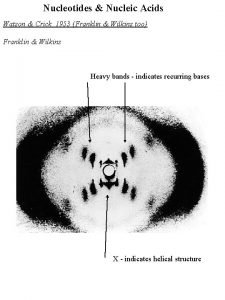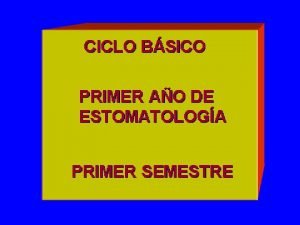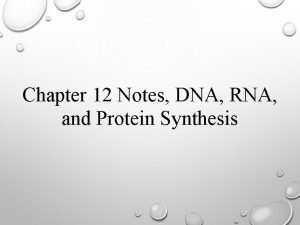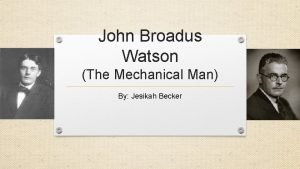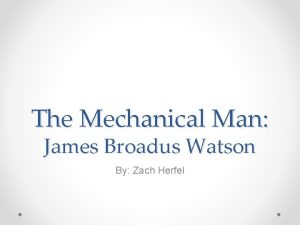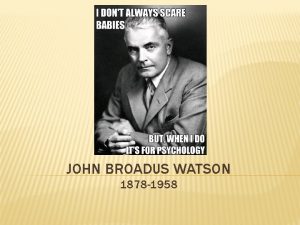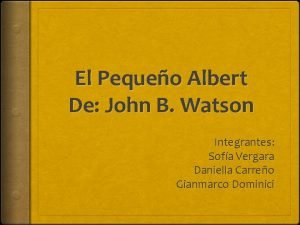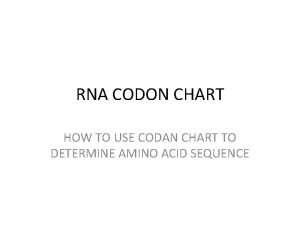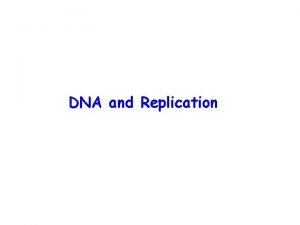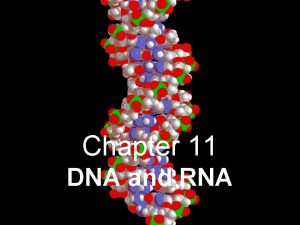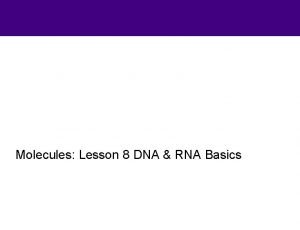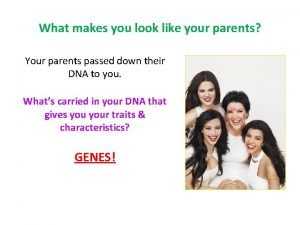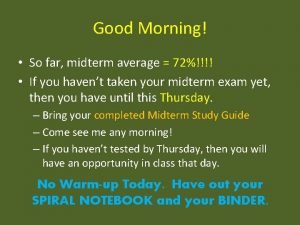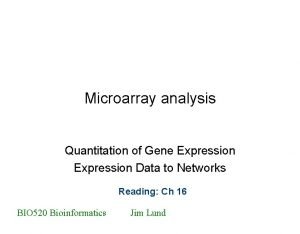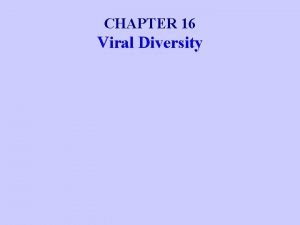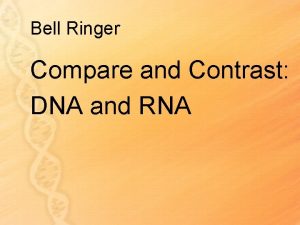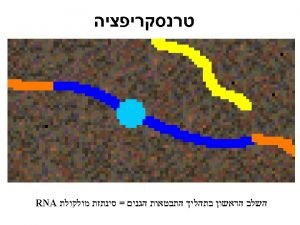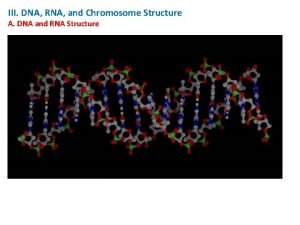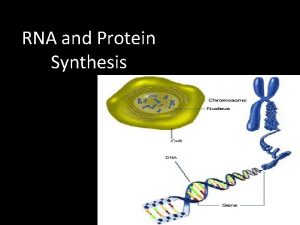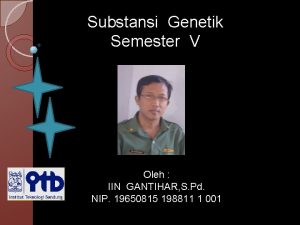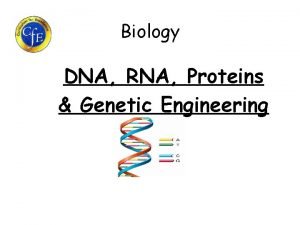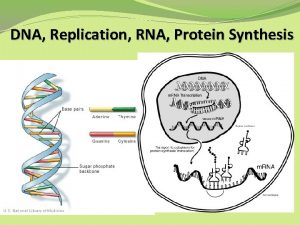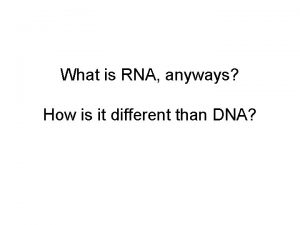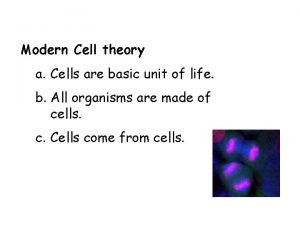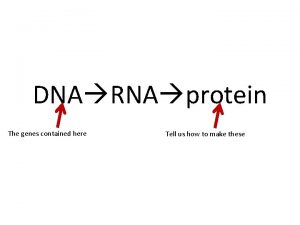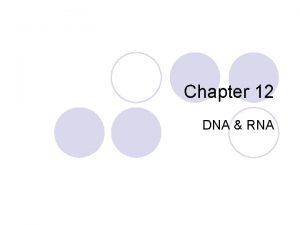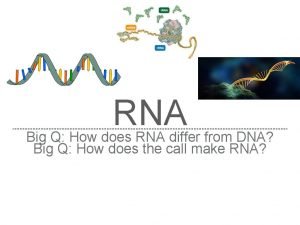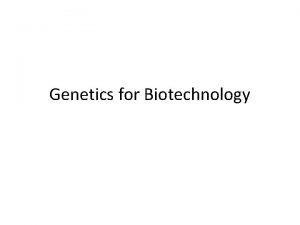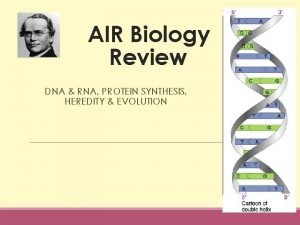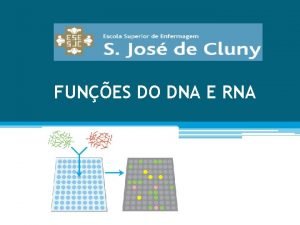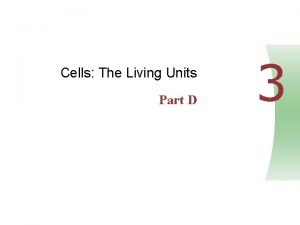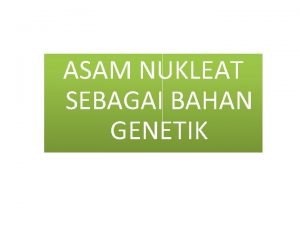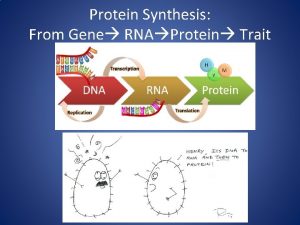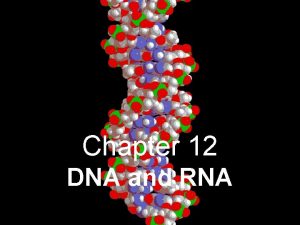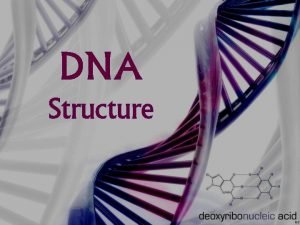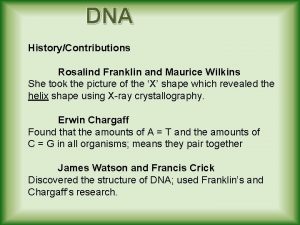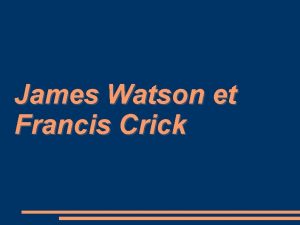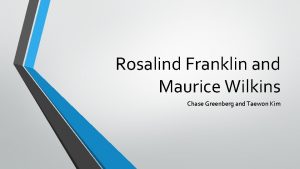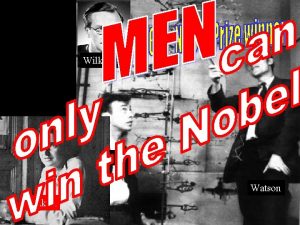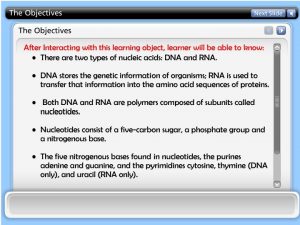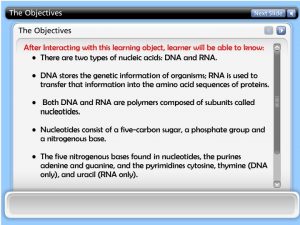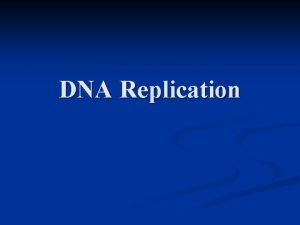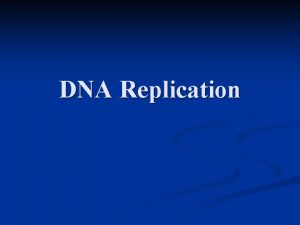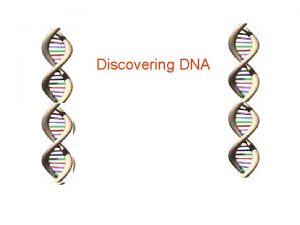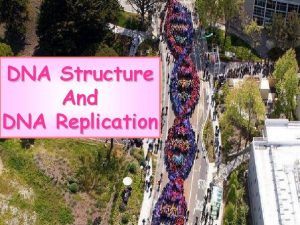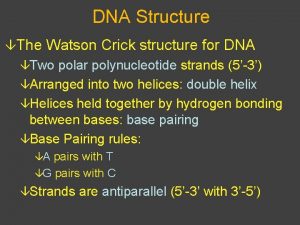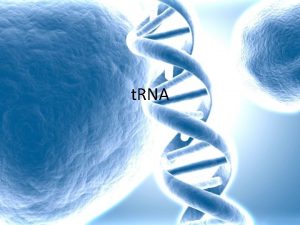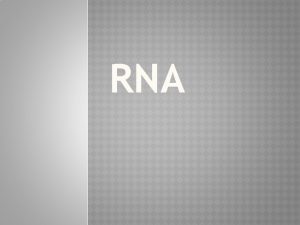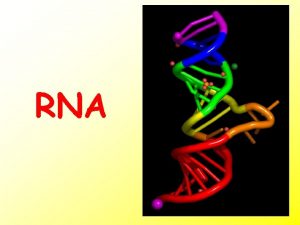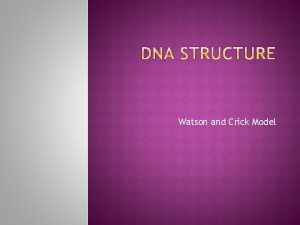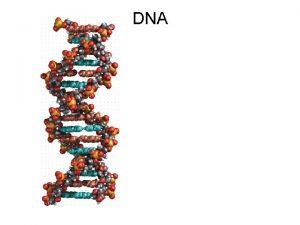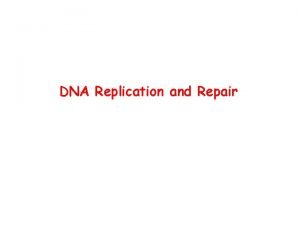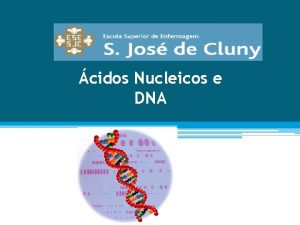DNARNA DNA RNA Watson Crick Maurice Wilkins Rosalind
















































- Slides: 48

DNA/RNA DNA RNA

Watson & Crick

Maurice Wilkins & Rosalind Franklin n Rosalind Franklin

Chargaff’s Rule of Ratios From analytic studies Edwin Chargaff (1952) determined that the: n Amount of Adenine always equals the amount of Thymine n Amount of Cytosine always equals the amount of Guanine n The amount of A-T is independent of the amount of C-G Erwin Chargaff, an American biochemist

DNA: replication and protein synthesis

Where have we seen DNA being replicated? MITOSIS AND MEIOSIS

Building blocks of DNA: Nucleotides

The sugar Deoxyribose The phosphate

The nitrogenous bases The Purines Why are these called nitrogenous bases?

The nitrogenous bases The Pyrimidines How are the pyrimidines different from the purines?

Four different Nucleotides BASIC STRUCTURE

DNA is a polymer formed by base pairing: Base pairing rule

The Double Helix A. The overall shape of DNA is described as a double helix (a twisted ladder). B. What force holds the two strands together?

DNA Nucleotides Section 12 -1 Purines Adenine Guanine Pyrimidines Cytosine Thymine Phosphate group Deoxyribose

DNA Replication n ANIMATION DETAILED

Enzymes involved in DNA replication n Helicase – opens the double helix to allow for replication n DNA polymerase – reads the original DNA strand lays down complementary bases n Ligase – glues the newly formed DNA together

DNA replication practice n You are DNA polymerase. Helicase has opened the DNA strand – read each side and produce the complementary copies. _________________ AGGTAACCGGTTACGATTAT TCCATTGGCCAATGCTAATA

12. 2 (part 2) - The Structure of DNA n Solving the Structure of DNA n Three scientists who worked to solve the structure of DNA were Rosalind Franklin, James Watson, and Francis Crick. Franklin found clues. These clues helped Watson and Crick explain the structure and properties of DNA.

12. 2 (part 2) - The Structure of DNA n A Venn diagram is made up of overlapping circles. It is a useful tool for comparing two or even three topics. In the space where the circles overlap, write the features that the topics share. In the space where the circles do not overlap, write the features that are unique to each topic. n n n built a three-dimensional model of DNA helped determine the shape of a DNA molecule photographed DNA using X-ray diffraction showed that DNA is a double helix studied DNA’s structure and properties

12. 2 (part 2) - The Structure of DNA n Complete the Venn diagram using phrases from the word box. photographed DNA using X-ray diffraction - studied DNA’s structure and properties helped determine the shape of a DNA molecule showed that DNA is a double helix built a threedimensional model of DNA

How are DNA and RNA similar? n DNA is composed of nucleotides and RNA is composed of nucleotides

IN YOUR NOTES TO PRACTICE BASE PAIRING RULES AGAIN _________________ A G T C C G T T A G T T C A G G C A A T C A

Let’s Review n DNA Structure is a ______ n DNA is composed of _____ What are four that make up DNA? A n. T n. C n. G n

How are DNA and RNA different? n DNA… n Nucleotides = deoxyribose sugar n Double helix structure n Stays inside nucleus n RNA… n Nuleotides = ribose sugar n Single-strand structure n Located both inside and outside of nucleus n Uracil instead of thymine

How are DNA and RNA different?

Transcription n m. RNA – stands for messenger RNA n it is the copy of the DNA message for making a protein n Occurs in the nucleus n Promoter region on DNA marks where transcription should start and terminator region marks where it should stop

m. RNA n Transcribes DNA message and carries it to ribosome n RNA polymerse is the enzyme that produces it CLICK ON PICTURE FOR ANIMATION ON TRANSCRIPTION

m. RNA n No T (thymine) so when it reads the nucleotide A on DNA it matches it with ____?

Protein Synthesis= transcription and translation n DNA contains all the information for your traits – the genes n These genes are blueprints and need to remain safe – kept inside the nucleus n Copies can be made though – a messenger

Genotype Phenotype DNA m. RNA t. RNA PROTEIN Transcription Translation

t. RNA n Once m. RNA is made it attaches to a ribosome n t. RNA = transfer RNA and they carry amino acids n Amino acids are the building blocks of proteins (remember? )

Translation n Ribosomes are the site of protein synthesis n Click here to see m. RNA and t. RNA work together at that ribosome to build a protein



Codon = m. RNA Anti-codon = t. RNA


Comparing RNA & DNA RNA Nucleotide Deoxyribose X X X Ribose X Single-stranded Double-stranded Nitrogenous bases X X

Comparing RNA & DNA Thymine RNA X Uracil Template for synthesis of nucleic acid Double helix Replication Transcription X X X

Comparing RNA & DNA RNA Exact Copy X Messenger More Than 1 Form Found in Nucleus Leaves Nucleus X X X Does not Leave X

Figure 12– 7 Structure of DNA Section 12 -1 Nucleotide Hydrogen bonds Sugar-phosphate backbone Key Adenine (A) Thymine (T) Cytosine (C) Guanine (G)



Figure 12– 14 Transcription Section 12 -3 Adenine (DNA and RNA) Cystosine (DNA and RNA) Guanine(DNA and RNA) Thymine (DNA only) Uracil (RNA only) RNA polymerase RNA DNA

Do Now Begin - RNA Concept Map can be also called which functions to from also called to which functions to to make up also called which functions to

RNA Concept Map RNA can be m. RNA r. RNA also called which functions to Messenger RNA Carry instructions from DNA also called Ribosomal RNA t. RNA which functions to also called which functions to Combine with protein Transfer RNA Brings amino acids to the ribosome to to make up Ribosomes

Chromosomal Mutations Deletion Duplication Inversion Translocation


 Meera kaur
Meera kaur Unlike dna rna contains
Unlike dna rna contains Phosphoanhydride bond
Phosphoanhydride bond Watson and crick
Watson and crick Watson strand crick strand
Watson strand crick strand Watson health francisco 1b
Watson health francisco 1b Watson and crick thieves
Watson and crick thieves Type of structure
Type of structure Polisacaridos extracelulares
Polisacaridos extracelulares Dna rna protein synthesis homework #2 dna replication
Dna rna protein synthesis homework #2 dna replication Rosalind franklin dna
Rosalind franklin dna John b. watson emma watson
John b. watson emma watson John watson james broadus watson
John watson james broadus watson John broadus watson emma watson
John broadus watson emma watson Experimento de watson
Experimento de watson Universal codon chart
Universal codon chart Nitrogenous bases in dna and rna
Nitrogenous bases in dna and rna Chargaff
Chargaff Rnabases
Rnabases Fraction
Fraction Dna to protein steps
Dna to protein steps Amoeba sisters mutations worksheet
Amoeba sisters mutations worksheet Atp ester bond
Atp ester bond Microarray analysis
Microarray analysis Corona virus dna or rna
Corona virus dna or rna Rna transfer
Rna transfer Rna or dna
Rna or dna Venn diagram of transcription and translation
Venn diagram of transcription and translation Dna dehydration synthesis
Dna dehydration synthesis Dna and rna venn diagram
Dna and rna venn diagram Substansi genetik dna dan rna mempunyai kesamaan yaitu
Substansi genetik dna dan rna mempunyai kesamaan yaitu Dna and rna
Dna and rna Dna and rna
Dna and rna What is rna
What is rna Venn diagram of dna and rna
Venn diagram of dna and rna What is this process
What is this process Dna rna protein
Dna rna protein A _________bond joins amino acids together.
A _________bond joins amino acids together. Virusmax
Virusmax Big q
Big q Central dogma
Central dogma Dna and rna coloring worksheet
Dna and rna coloring worksheet Dna e rna
Dna e rna Dna to rna transcription
Dna to rna transcription Ribosom
Ribosom Protein
Protein Chapter 12 dna and rna
Chapter 12 dna and rna Transfer rna
Transfer rna Somatic vs germ cells
Somatic vs germ cells
